Contrary to popular belief, email popups are for more than collecting emails. When used right, popups can be versatile tools, helping you achieve different conversion goals.
A compelling headline, eye-catching design, and persuasive copy are, doubtlessly, essential for high-converting popups. Yet, popups often perform better when they include an incentive, and discounts are among the most typical incentives in e-commerce popups.
To help you create effective discount popups, I’ll share seven different ways to use them on your site, with 14 high-converting discount popup examples from our favorite e-commerce brands.
How to Use Discount Popups
1. Increase Newsletter Subscribers
“Get 10 percent off your first order.”
Introductory discounts like the above are e-commerce marketers’ go-to incentives simply because they’re highly effective in turning website visitors into email subscribers and customers.
Welcome discounts not only encourage mid-funnel prospects to place their first order, but they can also help you grow your email list with interested leads. Even if your new subscribers don’t become customers immediately, you can nurture them with different offers and targeted email campaigns.
With a simple, attractive discount popup, you can incentivize new signups the right way. Take this example by Brain Effect, a German supplements e-tailer:
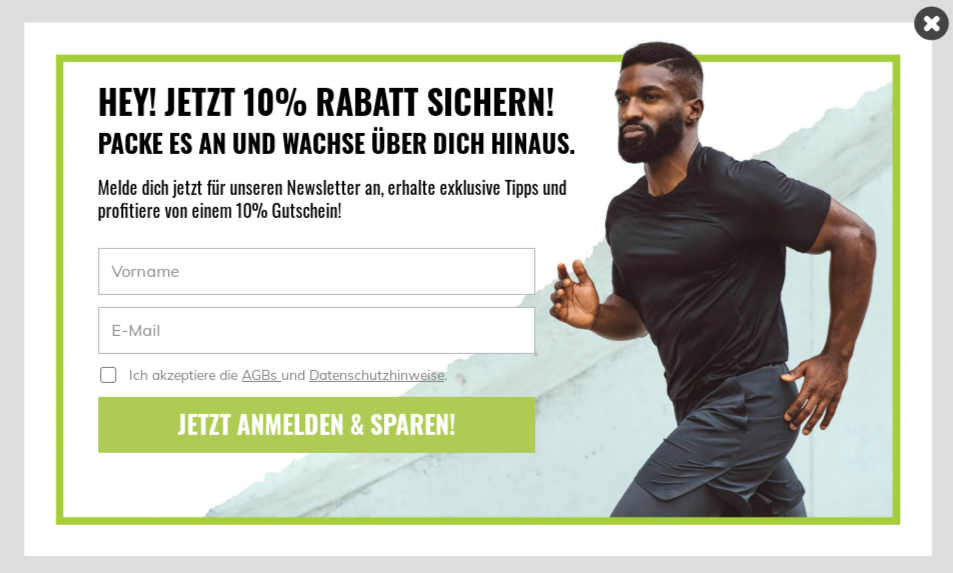
Brain Effect’s discount popup works well for at least a few reasons:
- Clear headline focusing on the value you’ll get (i.e., 10 percent);
- Eye-catching popup design that matches the look and feel of its website;
- Only two input fields increasing your likelihood of signing up; and
- Benefit-driven call-to-action (CTA) button that reads “Sign Up Now and Save.”
Brain Effect knows that a discount code may not always convince visitors to opt in for promotional emails. That’s why in the popup copy, they also mention that you’ll get exclusive tips when you join their newsletter.
Olivers, a Danish pet food company, has a similar offer in its discount popup, but with a twist:
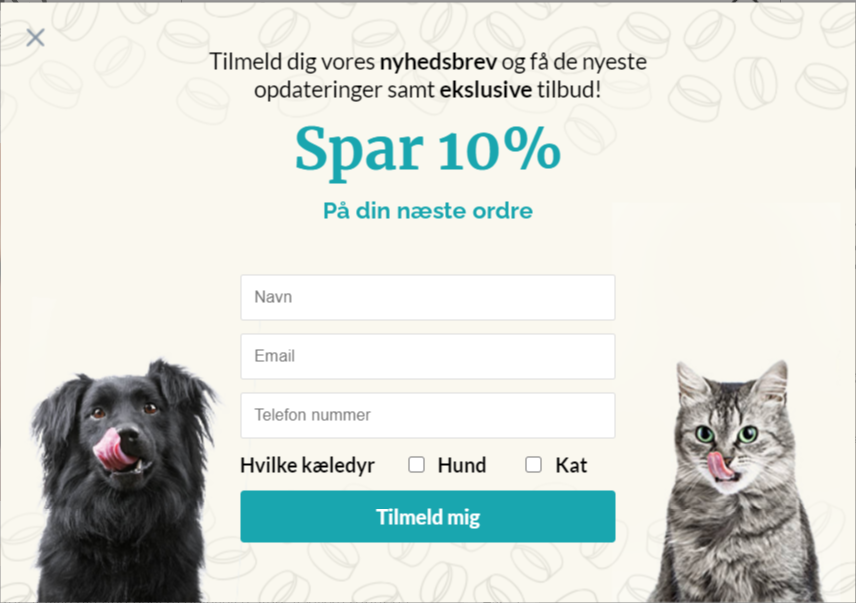
Olivers wants to segment its new subscribers so that they can target them better with their email marketing. That’s why, after grabbing your attention with a 10 percent discount, they ask if you have a dog or a cat as their last question.
Although adding more input fields to your popups might decrease your conversions, a simple checkbox like the above might work well for easy questions.
But if you need to get more information from your new leads or have questions that take more time to answer, you’ll like the next section.
2. Get Richer Lead Data
Just because you’re giving visitors a discount code, it doesn’t mean that they’ll be willing to fill out long and detailed optin forms. In fact, our data shows that more input fields often mean fewer conversions.
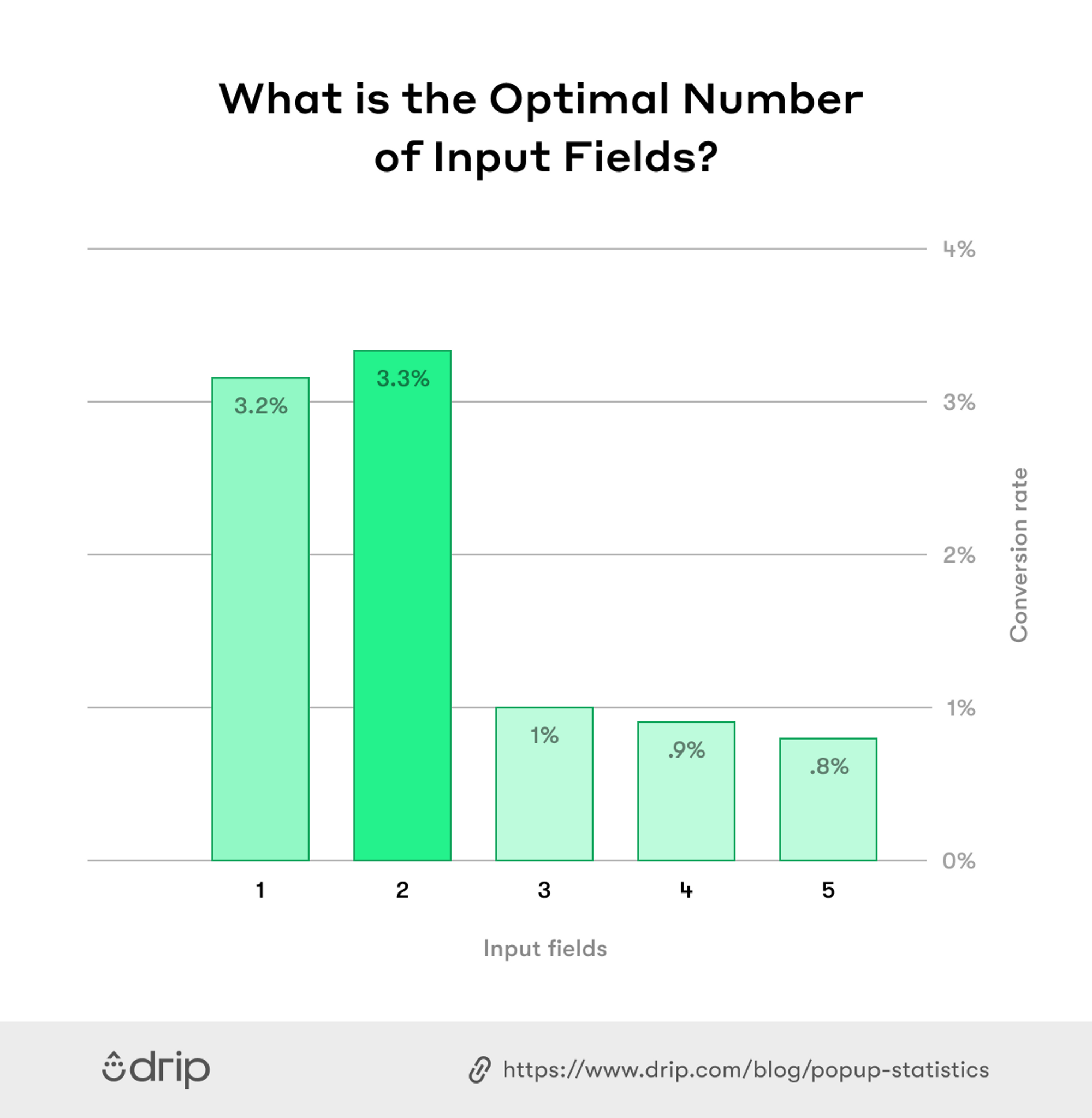
But this doesn’t mean that you can’t or shouldn’t ask for more visitor information in your popups. By using multistep popups, you can collect visitor information in two steps and enrich your lead data—without taking a hit on conversions.
Sohu Shop is a company that does that right. When you visit the website, the company invites you to sign up through this popup and save 10 percent off your next order:
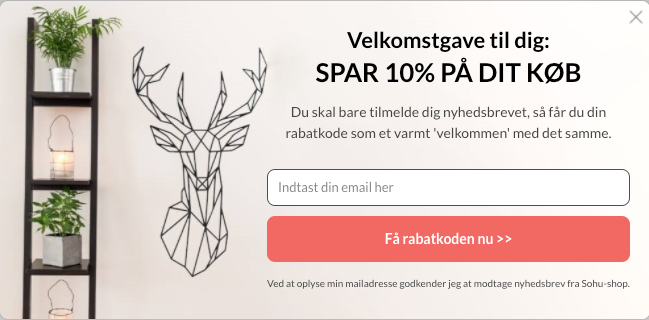
Framed as a “welcome gift for you,” Sohu Shop’s offer is easy to claim. All you need to do is to enter your email address, and you’re done.
However, Sohu Shop wants to learn more about its new subscribers too, so in the next step, they ask two more questions, asking your name and interests:
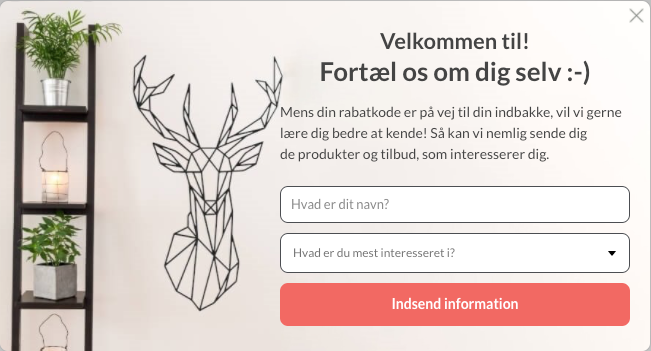
Even if visitors don’t fill out the second step, they’re still registered as new subscribers. And if they do, Sohu Shop can target them better with its emails.
Another company that leverages multistep popups is Wedio. However, Wedio simplifies the process even more for its visitors by asking only one question per step.
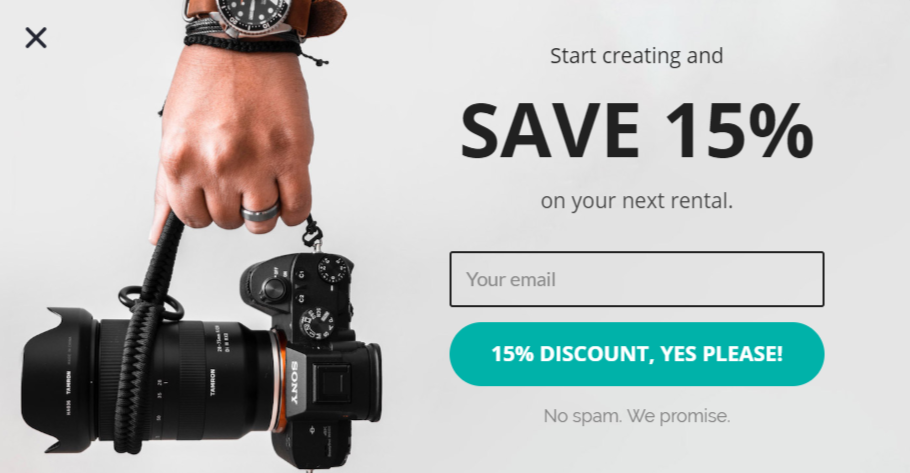
Once they get your email address with the promise of a 15 percent discount, they ask yet another simple question:
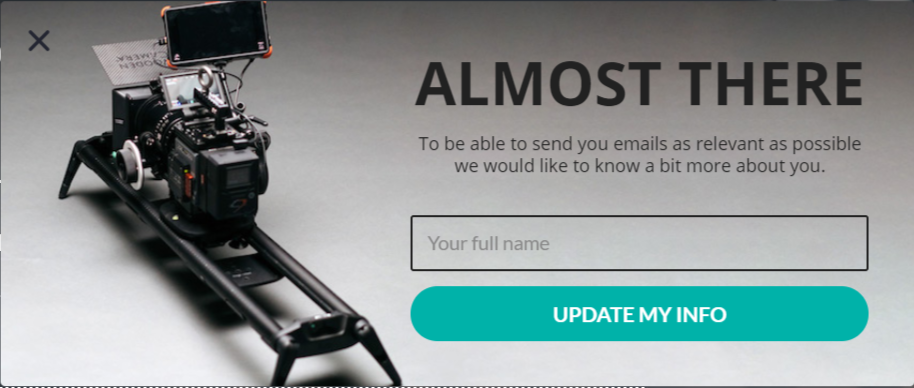
If you want to play it safe, as Wedio does, keep the number of input fields to a minimum in each step of your discount popups.
3. Reduce Frictions
If you ever signed up for an email list to get a discount, you know it feels like ages until you get the code delivered to your inbox.
Although many e-commerce companies choose to send out discount codes via email, they overlook how dependent they become on their ESPs (and they underestimate the impatience of online shoppers.)
Asking new leads to check their inboxes can create friction in the buyer’s journey, but there’s a solution. You can reduce friction by showing your discount code in the success step of your popups. This way, visitors can obtain their code without leaving your site, and use it right away without any distractions.
Nordic Beads is a company that uses this strategy. When you visit the website and click the popup’s teaser, you see this form:
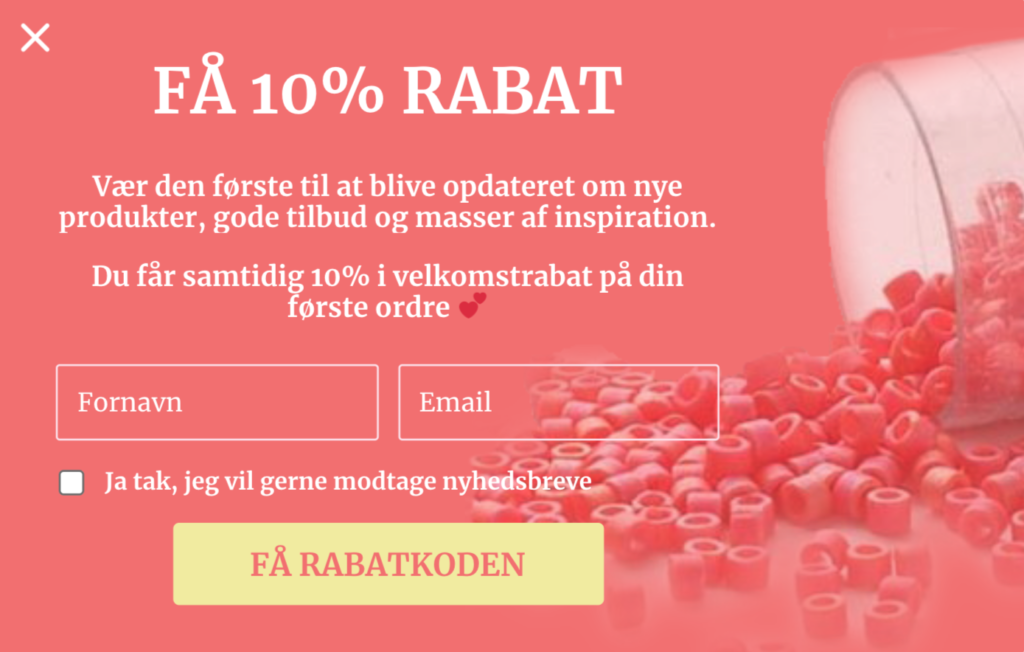
In it, Nordic Beads invites you to sign up for its email list in exchange for product updates, good offers, inspiration, and a 10 percent discount.
Once you submit the form, the success step appears, thanking for the signup and delivering on the company’s promise with a discount code:
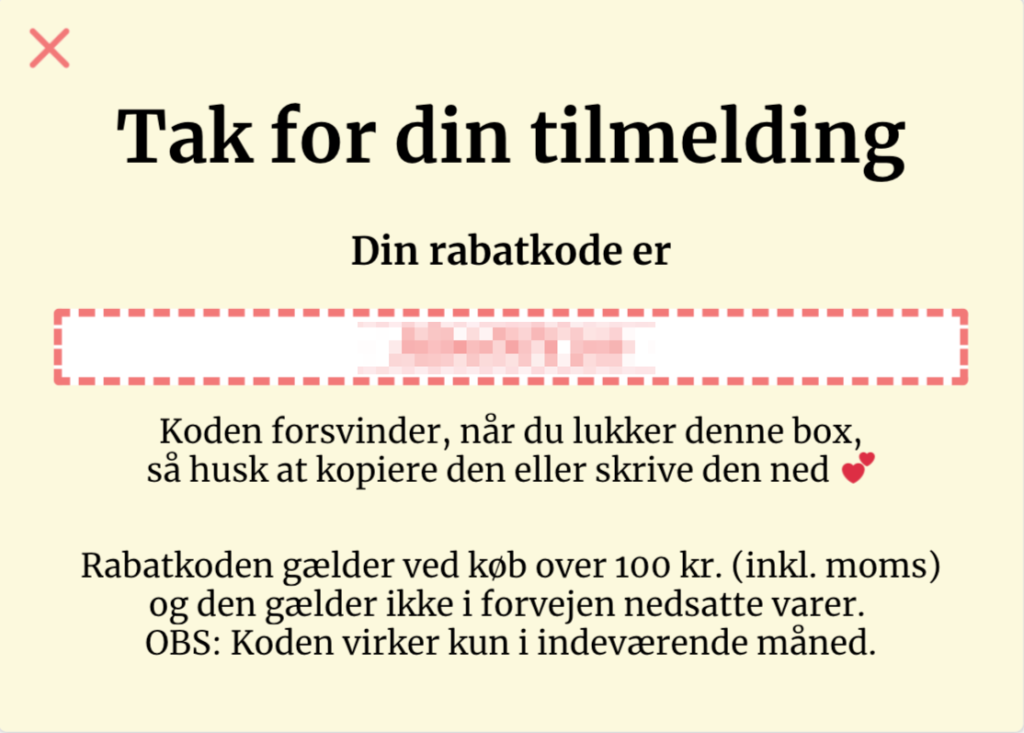
“The code disappears when you close this box, so remember to copy it or write it down.”
Thanks to the company’s clear instructions and quickly-delivered coupon code, it becomes easy for visitors to use the code without wasting time.
If your primary conversion goal is to get more orders (and not necessarily new leads,) you can take a safer approach, as Dalton Cosmetics does.
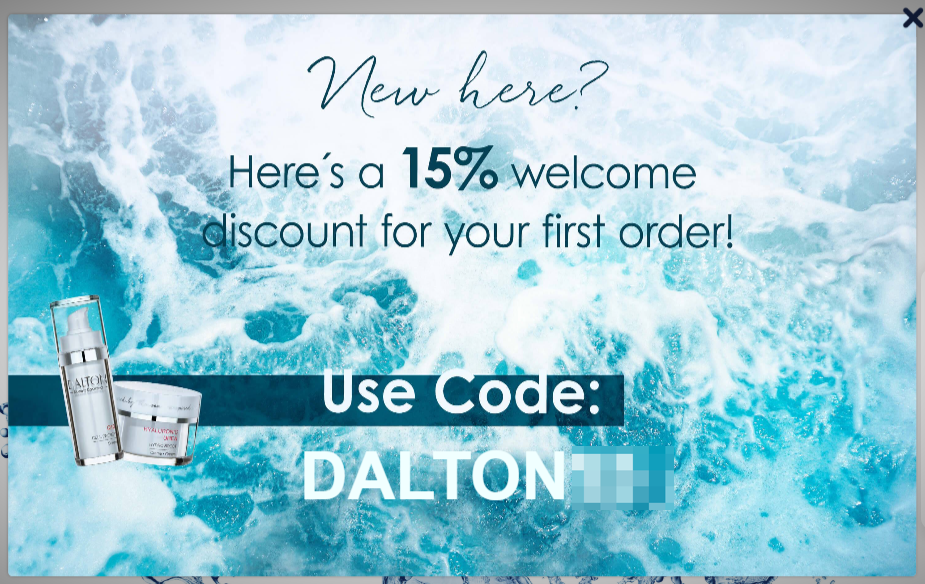
Similar to Nordic Beads, the company welcomes new visitors with a popup and a special offer. However, unlike the former, Dalton Cosmetics openly write the discount code so you can get started without signing up.
It’s a smart tactic to try out especially if your products have a shorter buying cycle or are more affordable.
There are different ways to reduce the friction caused by your discount popups. My suggestion is to play it safe and do both: write your coupon code in the success step and send it in an email.
4. Offer Limited-Time Discounts
Although discounts are excellent incentives for consumers, they’re not always affordable for e-tailers.
Maybe you can’t afford to discount your products all the time or are worried that discounts may reduce your products’ perceived value. For one reason or another, you might be reluctant to offer discounts on your store, and you’re not alone.
Luckily, there’s still a clever way to leverage discounts without hurting your profit margins: offering discounts for a limited time only.
With a time-bound or amount-limited discount offer, you can also drive urgency, and nudge prospects to take action. Take this example by Wool and the Gang:
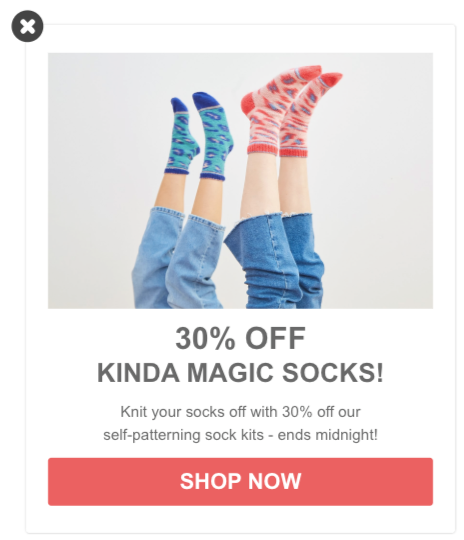
With a basic yet eye-catching popup, Wool and the Gang announces a 30 percent discount on one of its product categories. When you read the popup copy, you learn that the discount is only valid until midnight. So if you’re interested in this offer, the time limit gives you a compelling reason to shop your favorites before it’s too late.
(If you want to take this approach one step further, add a countdown timer to your discount popup and drive more urgency.)
While Wool and the Gang limits its deal by time, Miinto offers a limited amount of discount codes every day, and promotes it with this popup:
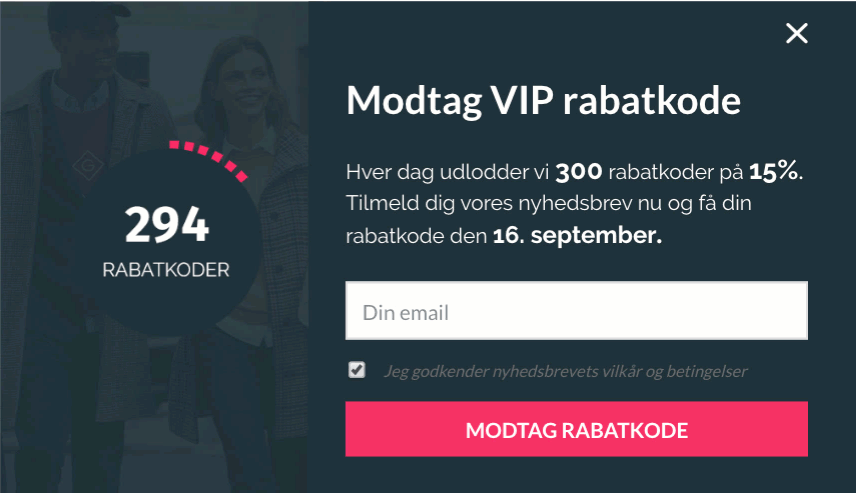
“Get a VIP Discount Code: We’re distributing 300 15% discount codes every day. Join our newsletter now and get your code on September 16th.”
Through this brilliant discount popup, Miinto collects emails with the promise of a VIP voucher—one of 300 available. The company smartly uses a GIF to demonstrate the scarcity of discount codes and makes visitors take action.
Both examples are great alternatives to test out if you’re not a fan of permanent welcome discounts.
5. Discount When Deserved
While one alternative is to limit when visitors get a discount, another strategy is to decide which visitors should get it. Following the latter approach, you can offer discounts to those who deserve it, based on how they interact with your store and products.
For example, if a visitor is about to leave your site with an empty basket, they may not qualify for a discount code. However, you can persuade a prospect with a high cart value with a well-deserved discount popup, like this:
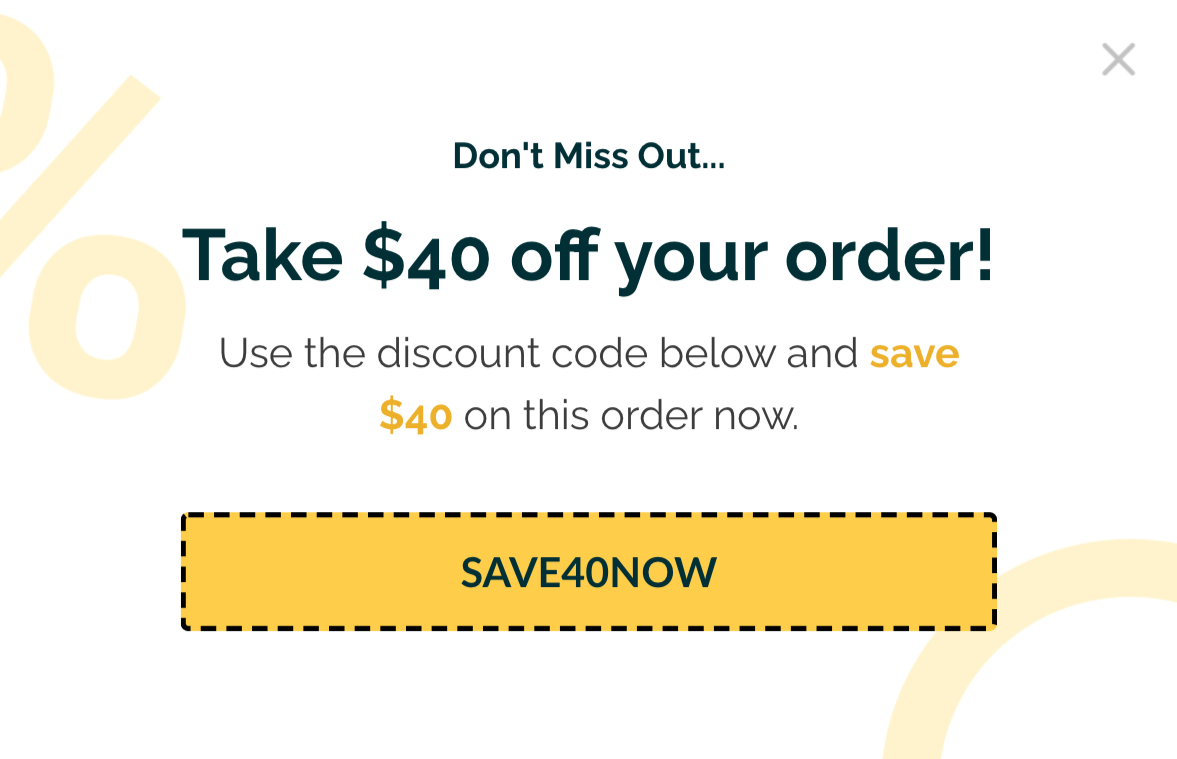
Create a similar campaign
Like what you see? Load this high-converting template in our editor and customize it to the look and feel of your business.
Try it outIf one of the brands in your store is currently on sale, you likely promote it with a popup. But rather than show this popup to all website visitors, you can promote the brand-specific discount to visitors that have items from that brand in their cart, with a popup like this:
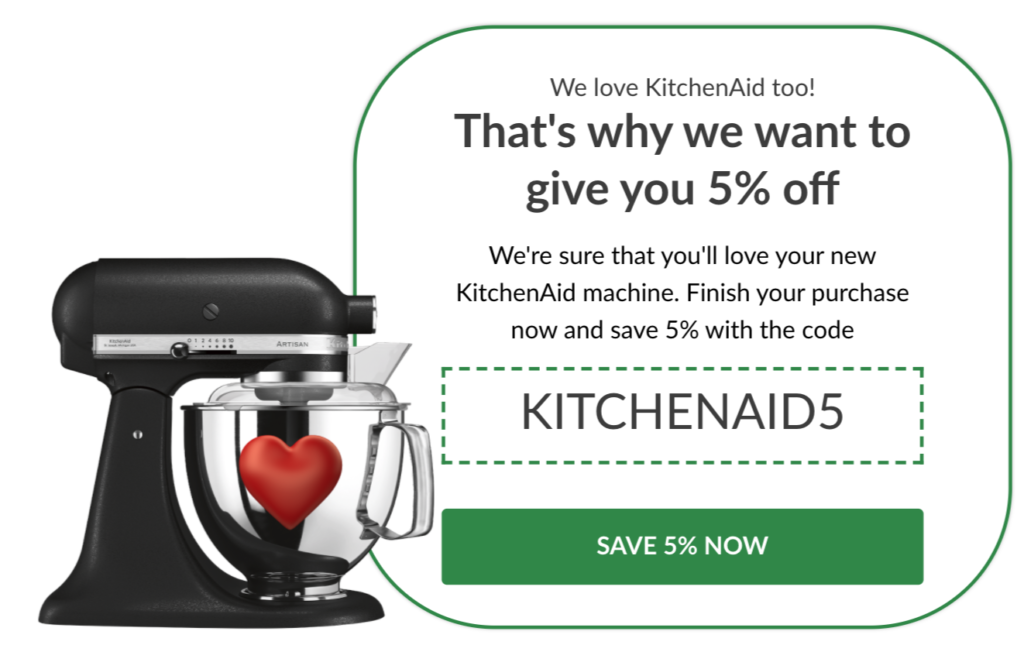
This way, you can better target visitors that are likely interested in your discounts without hurting the user experience for the rest.
6. Prevent Cart Abandonment
Cart abandonment is a tricky matter. While a discount code, like the above, might convince some visitors to stay on your site, it won’t likely work on top-funnel prospects who aren’t ready to buy from you yet.
Another way to combat cart abandonment is to turn abandoning visitors into email subscribers first. This way, even if they don’t use the discount code immediately, you can continue to market to them through email.
With an effective cart abandonment popup, you can offer abandoning shoppers a special discount when they sign up for your email list, as MESSAGE successfully does:
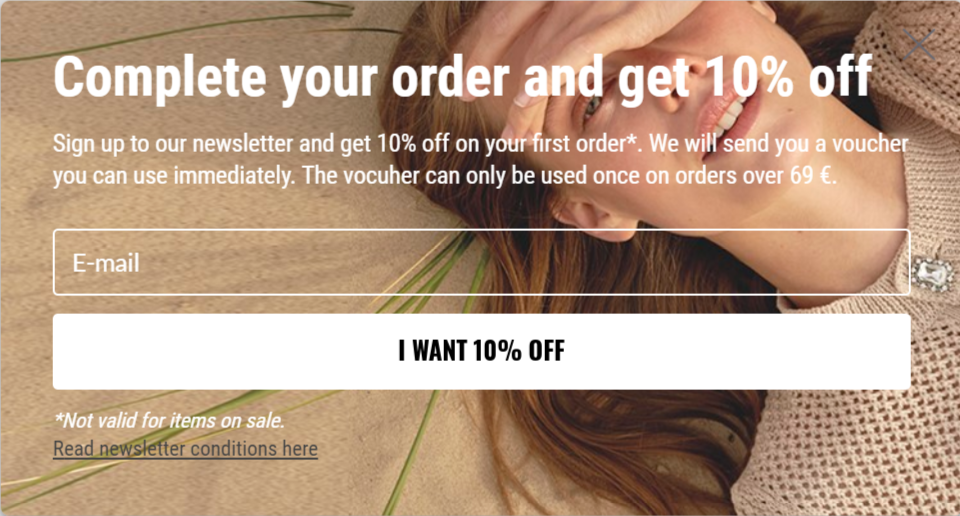
The company uses a simple and clear headline, and explains how and when you can claim your discount. Moreover, MESSAGE chooses a value-driven CTA button, instead of “Sign Up.”
Another company that uses this strategy is Beady, but its popup copy takes a different angle:
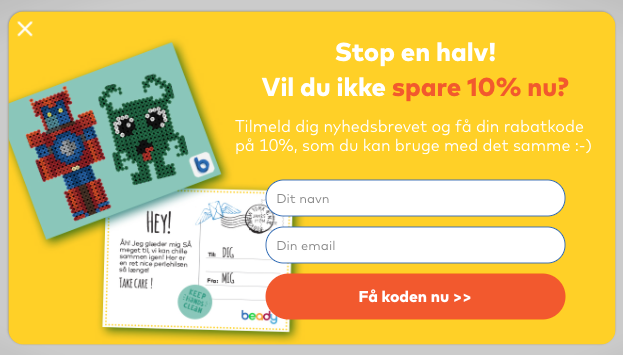
When you’re about to leave its website, Beady, first, tells you to “hold on” and asks “Don’t you want to save 10% now?” rather than merely writing “Save 10% now.”
It’s hard to say “no” to this question, and Beady knows this well. And if you want to save 10 percent on your order as the company suggests, all you need to do is fill out two input fields.
7. Promote Discounted Products
Although discount popups can help you collect more emails and reduce cart abandonment, these aren’t their only use cases.
If you’re offering discounts on specific products or categories, you can promote them across your store with timely sales popups and guide your visitors to relevant pages.
Check this example by Ny Form:
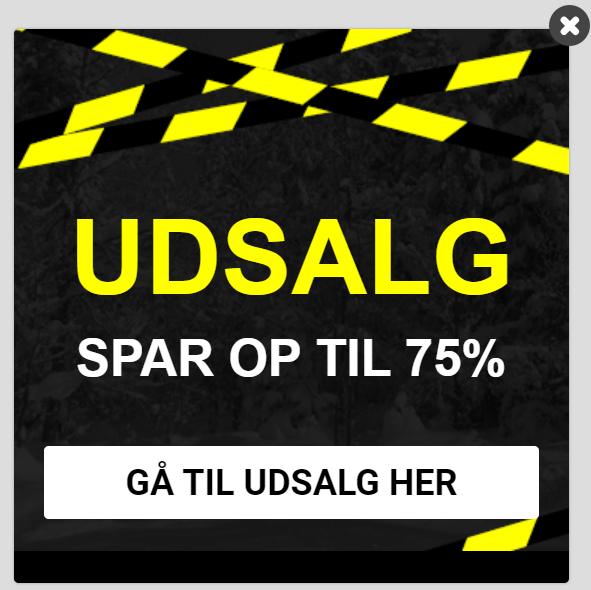
Ny Form’s sale popup has a different color scheme from its website design, which helps the popup stand out. The company also visually shows the sale without using many words—all it takes is a bold headline, the discount level, and a CTA button.
Ny Form’s type of discount popup is ideal for big sales campaigns. If you’re only offering discounts on specific brands or categories, however, you can take a different approach, as Skobox does:
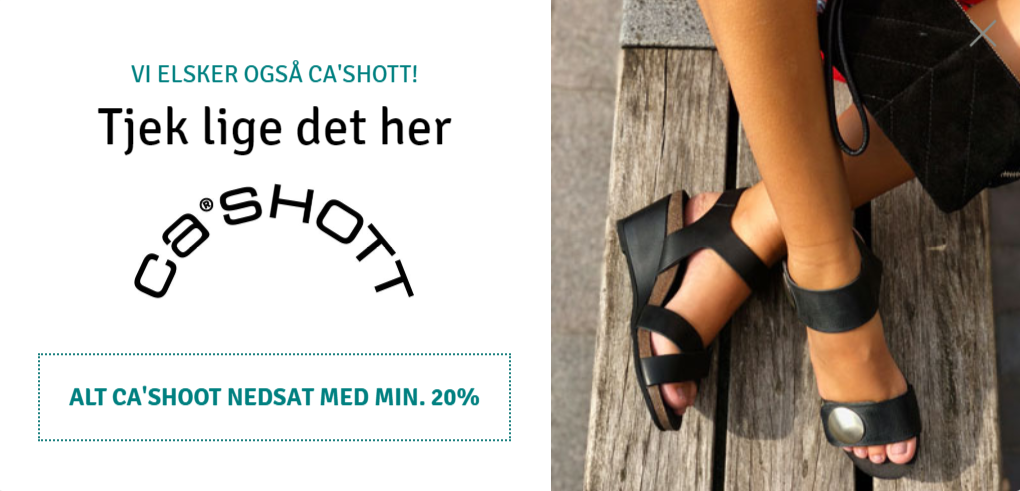
In this popup, Skobox has only one focus: promoting the brand that’s currently on sale. That’s why the company simply informs you that all products from that brand are down by at least 20 percent.
Skobox also refreshes your memory with an image showing a product from the brand. If you’re interested in this brand, you now have a valid reason to click through and shop from the sale.
Conclusion
There’s more than one correct way to use discounts in e-commerce. Whether you’re trying to collect more emails or convert more visitors into customers, discounts can be the nudge you’ve been looking for.
The key to using discounts, though, is to offer them at the right time, to the right visitors, and popups are the perfect tool for that.
I hope these 14 discount popup examples, used by our favorite e-commerce brands, can inspire your own.



